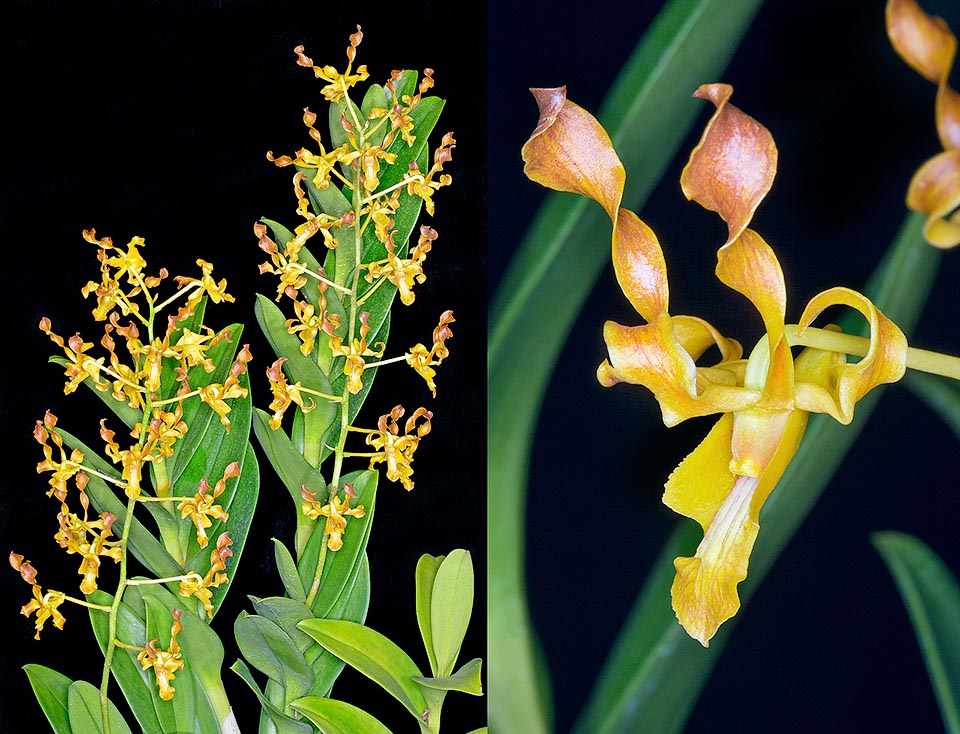Family : Orchidaceae

Text © Pietro Puccio

English translation by Mario Beltramini
The species is native to New Guinea where lives on the trees of the humid forests at low altitudes.
The name of the species is the combination of the Greek substantives “δένδρον” (dendron) = tree and “βίος” (bios) = life, with reference to the numerous species of the genus living on the trees; the specific name is the Latin substantive “aries, etis” = ram, with reference to the shape of the flower.
Common names : ram-like dendrobium (English).
The Dendrobium aries J.J.Sm. (1914) is an epiphytic species with robust cylindrical pseudobulbs, 1-2 m long, provided of persistent leaves alternate, distichous, oblong, 8-14 cm long and 2-3 cm broad, coriaceous, of pale green colour and glossy above, matt below. Racemose axillar inflorescences from the upper nodes, erect, 20-40 cm long, bearing 18-40 flowers, of 3,5-5 cm of diameter, with oblong sepals with pointed apex, retroflexed, of yellow colour with brown veins, the lateral ones, merged at the base of the column, form a sort of a spur (mentum). Almost erect petals, linear-spatulate with pointed apex, twisted thrice, of yellow colour suffused brown, and trilobed labellum with oblong median lobe with pointed apex and erect lateral lobes on the sides of the column, of yellow colour with pale brown veins.

Dendrobium aries is an epiphyte of New Guinea with robust cylindrical pseudobulbs, even 2 m long. 20-40 cm inflorescences, with 18-40 flowers of 3,5-5 cm of diameter © Giuseppe Mazza
Somewhat rare species in cultivation, but of undeniable ornamental characteristics, requires high luminosity, medium-high temperatures in summer, 22-34 °C, slightly cooler in winter, with night lowest not under the 16-18 °C, high atmospheric humidity, 65-85%, and constant ventilation. Regular and abundant waterings during the vegetative phase, more reduced in winter, utilizing rain water, demineralized or by reverse osmosis. Biweekly fertilizations, during the pseudobulbs growth, utilizing a hydrosoluble balanced product, with microelements at ¼ the dosage shown on the package. It can be mounted on branches, bark, cork or arborescent ferns roots rafts, keeping in mind the size it can reach, or cultivated in pots or baskets with draining and aerated compound formed by bark or coir fragments and medium sliced charcoal. The repottings, when necessary, are to be done on the vegetative regrowth.
The species is reported in the appendix II of CITES (species whose trade is ruled internationally).
→ For general notions about ORCHIDACEAE please click here.
